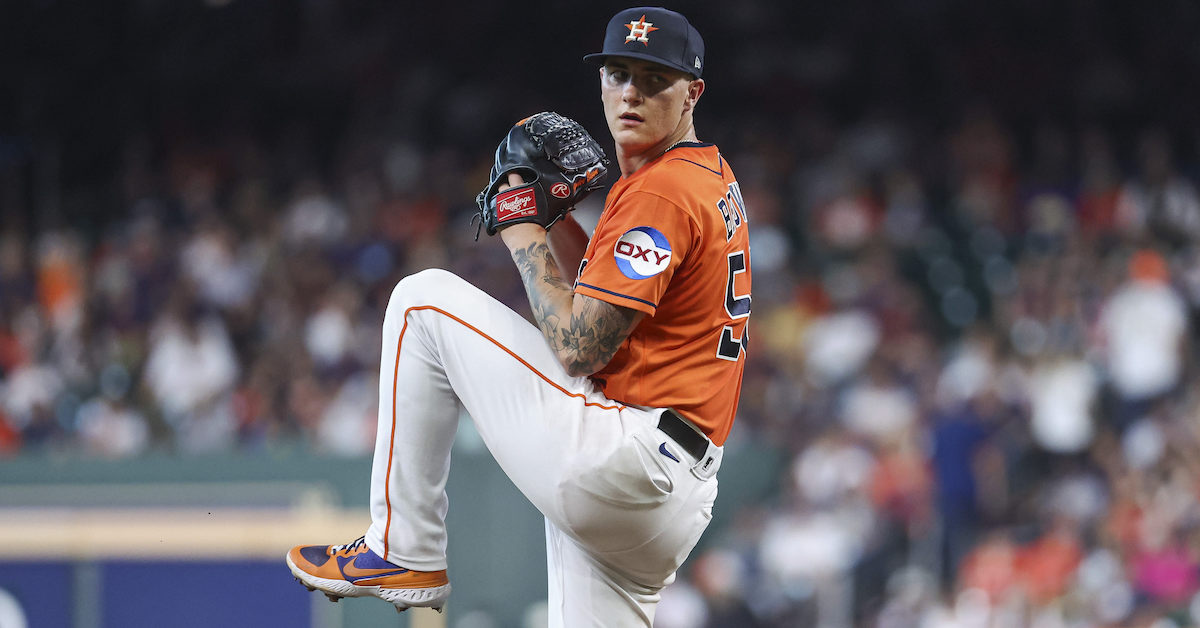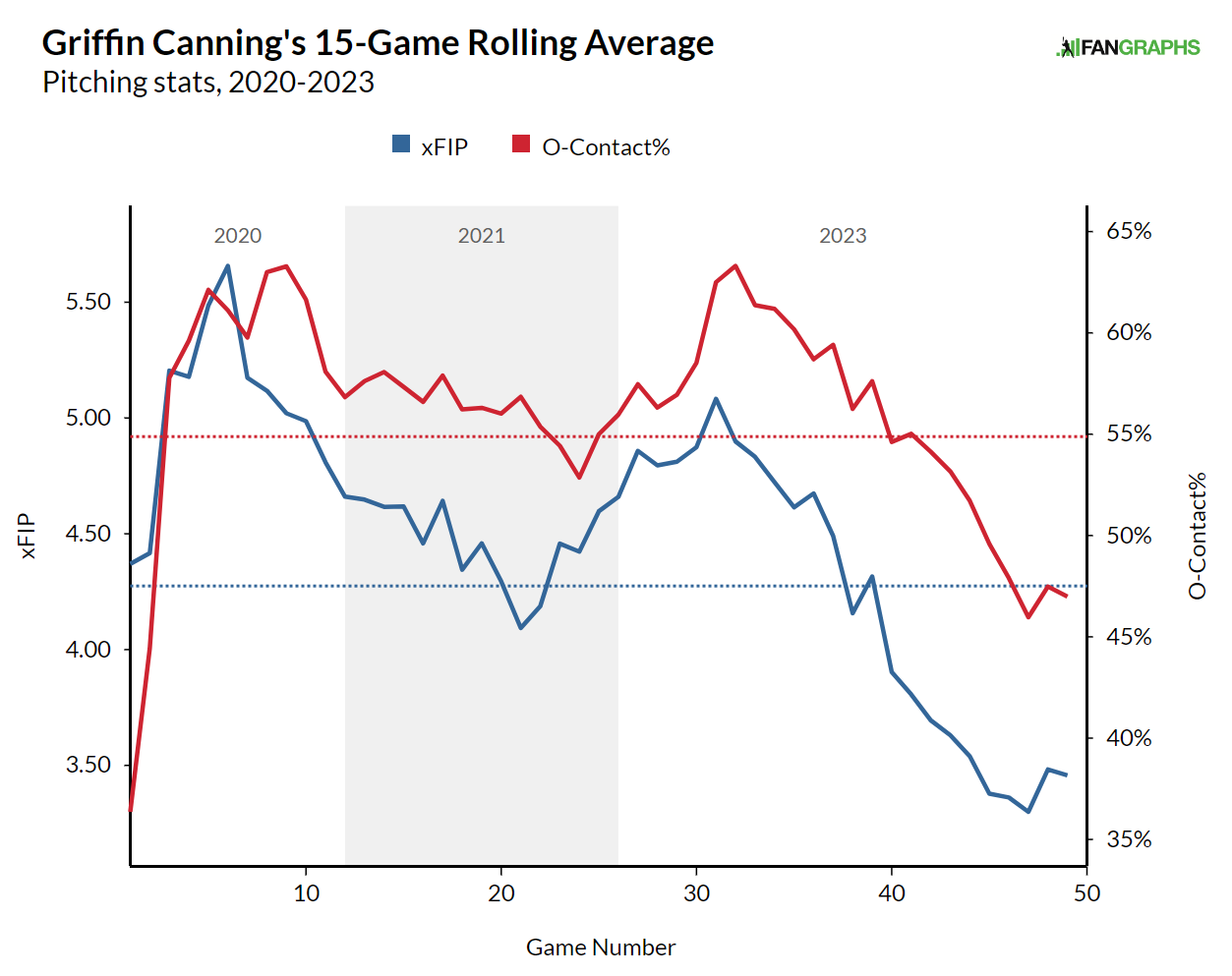Top of the Order: Who Should the Marlins Trade Next?

Welcome back to Top of the Order, where every Monday, Wednesday, and Friday, I’ll be starting your baseball day with some news, notes, and thoughts about the game we love.
On Friday night, after a horrendous 9-24 start to the season, the Marlins waved the white flag barely a month into the campaign when they traded back-to-back batting champion Luis Arraez to the Padres for a quartet of prospects. Arraez almost certainly won’t be the last player Miami will swap for prospects this year as new president of baseball operations Peter Bendix looks to reset his beleaguered roster and build for the future.
Considering the team’s position, there are only two Marlins players who should be off limits to prospective trade partners, starting pitchers Eury Pérez and Sandy Alcantara, who are both out for the season after undergoing Tommy John surgery. Alcantara, who signed a five-year, $56 million extension after the 2021 season, should be ready for Opening Day, while Pérez will miss at least a couple months of next season, too.
Let’s take a look at some of the players the Marlins could deal between now and the July 30 deadline.
Jazz Chisholm Jr., CF
Few players in baseball are more entertaining than the lefty-swinging Jazz Chisholm Jr., who’s been viewed as a key piece for the Marlins since his 2021 rookie year. Back then, Chisholm was their starting second baseman, and he’s yet to play as many games as he did in that season, when he came to the plate 507 times over 124 games. Injuries limited him to 157 games over the past two years, but that full season’s worth of production across 2022 and 2023 offered a tantalizing glimpse of what he could offer if he could just stay on the field: .251/.312/.487 (116 wRC+) with 33 homers, 34 steals, and above-average defense at both second base and center field.
Chisholm’s 2024 hasn’t been great thus far (102 wRC+), but he’s stayed healthy and is taking walks more than ever, with a career-low strikeout rate to go with that more patient approach. Lefties have always given him fits in his career (66 wRC+), but he’s got plenty of utility as the strong side of a platoon in center, and teams may be open to moving him back to second base if that better fits their roster. The 26-year-old Chisholm is earning $2.625 million this year and isn’t a free agent until the conclusion of the 2026 season. Maybe those two years of club control beyond this season would make the Marlins hesitant to trade him, but dealing him now would also probably sweeten the return.
Best Fits: Phillies, Mariners, Royals, Guardians
Jesús Luzardo, SP
The Marlins made a savvy deal back in 2021, when they acquired lefty starter Jesús Luzardo from the A’s for 56 games of Starling Marte. Luzardo missed half the 2022 season with a forearm strain, but he was great in his 18 starts. Last year, the hard-throwing lefty broke out in a big way, posting a 3.58 ERA (3.55 FIP) in 178.2 innings and striking out 28% of the batters he faced.
Luzardo stumbled to start this season, with just 26 innings across his first five starts, allowing 19 runs (6.58 ERA), with his strikeout rate tumbling by four percentage points and his walk rate up above 11% before he hit the injured list with a strained flexor tendon on April 26. Typically, that diagnosis portends a long absence, but Luzardo made his first rehab start on Sunday, so his recovery seems to be progressing fairly swiftly, though there is no timetable yet for his return. Like Chisholm, Luzardo has two more years of club control after this one.
Best Fits: Dodgers, Rangers, Giants, Twins, Astros
Bryan De La Cruz, OF
Bryan De La Cruz hasn’t had a flashy career to date; he has a 99 wRC+ across his four seasons and hasn’t produced 1.0 WAR in any of them. But he’s always felt capable of more: In 2022, his xwOBA and sweet-spot percentage were both elite, with the latter being the best in baseball. His thump took a step back last year, but his sweet-spot percentage remained excellent. This year he’s trading ideal contact for hitting the ball harder; he’s barreling more balls than ever but his sweet-spot rate is down nine points.
It seems as if De La Cruz doesn’t exactly know what type of hitter he should be, with the constant fluctuations preventing a true breakout. He’s never been a good hitter, which limits his utility, but some of the stronger teams at hitting development could look to iron out some kinks with the hope that things will start to click for him. He’s not a free agent until the end of the 2027 season, but he seems as good as any player to benefit from a change of scenery.
Best Fits: Phillies, Rays, Mariners, Cardinals
Of course, the Marlins should look to deal away more than just these three players. The problem is many of their trade candidates are struggling — shortstop Tim Anderson, first baseman and DH Josh Bell, outfielder Jesús Sánchez, starting pitchers Trevor Rogers and Edward Cabrera, and reliever Anthony Bender — while others are injured: starter Braxton Garrett, corner infielder Jake Burger, and reliever A.J. Puk. Closer Tanner Scott is healthy and his 2.77 ERA is promising, but his peripherals (5.54 FIP, .194 BABIP, and a walk rate that is 3.2 percentage points higher than his strikeout rate) are bad enough to suppress the return package.
Some of these players probably will be traded, if for no reason other than to shed some payroll. Anderson, Bell, and Scott are all free agents after this season, so the Marlins should be willing to trade them for a can of beans come late July if they can’t get anything else for them. For the others, Miami can afford to hold onto them if the right deal doesn’t come to fruition before the deadline and look to trade them in the future.
…
Alek Manoah Looks Like Himself, for Better and Worse
On Sunday, Blue Jays righty Alek Manoah returned to a big league mound for the first time since August 10, finally making his way back after months beleaguered by ineffectiveness, injuries and mechanical issues.
The questions surrounding the sharp downturn of Manoah’s career won’t go away after a four-inning outing in which he threw 92 pitches, gave up seven runs, walked four batters, and hit another. Understandably, that performance will evoke far more memories of his troubling 2023 season than it will cause fans to think fondly back to his 2022, when he finished third in Cy Young voting. His command was shaky, featuring plenty of up-and-arm-side misses with his fastball:

That gave the Nationals a lot of easy takes; they offered at just 18% of pitches outside the strike zone, well below the league average of 31%. Batters did make less contact than league average on swings both inside and outside of the zone, but they didn’t do much swinging: Washington swung at only 36% of Manoah’s offerings, 10 percentage points below average.
The good news is Manoah’s velocity ticked up notably from last year, with his heater averaging 94.3 mph compared to 92.6 mph. But ultimately, if he wants to stick in the rotation and resurrect his career, he’ll have to make more competitive pitches; the stuff doesn’t matter if hitters can just wait it out and take their bases. Because the Blue Jays are expected to be without the injured Yariel Rodriguez and Bowden Francis for a while, Manoah should have ample opportunity to figure things out at the major league level.












